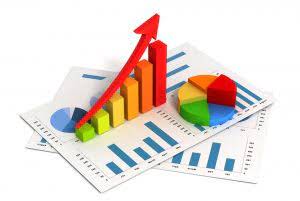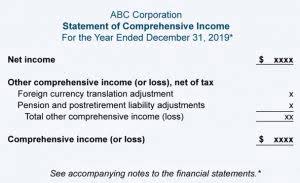Completing the Accounting Cycle: A classified balance sheet Saylor Academy

Unearned revenues (revenues received in advance) result when a company receives payment for goods or services before earning the revenue, such as payments for subscriptions to a magazine. These unearned revenues represent a liability to perform the agreed services or other contractual requirements or to return the assets received. Fair disclosure is also one of the benefits offered by a classified balance sheet. In any balance sheet, it is possible to misrepresent information or misstate the facts.
- However, it is mandatory to prepare and disclose the financial statements for public limited companies.
- These unearned revenues represent a liability to perform the agreed services or other contractual requirements or to return the assets received.
- Most of the time, the classified balance sheet has accompanying notes to report details of all items.
- In the classified balance sheet, assets are further sub-classified into current and non-current assets.
- The data reported in the balance sheet is used by different users in different ways.
Examples include property, plant, and equipment; long-term investments; and intangible assets. Current are the possessions of a company that can be liquidated within 12 months. Some of the current assets have very high liquidity and can be used as a substitute for cash.
Other Entity Forms
Retained earnings shows the cumulative income of the company less the amounts distributed to the owners in the form of dividends. Cumulative translation adjustments result from translating foreign currencies into US dollars (a topic discussed in advanced accounting courses). A classified balance sheet presents information about an entity’s assets, liabilities, and shareholders’ equity that is aggregated (or “classified”) into subcategories of accounts. It is extremely useful to include classifications, since information is then organized into a format that is more readable than a simple listing of all the accounts that comprise a balance sheet. When information is aggregated in this manner, a balance sheet user may find that useful information can be extracted more readily than would be the case if an overwhelming number of line items were presented. This type of balance sheet segregates the assets, liabilities, and equity into classifications or categories, thus presenting a more detailed and clear picture of a company’s financial condition.

Companies in service industries and merchandising industries generally have operating cycles shorter than one year. Companies in some manufacturing industries, such as distilling and lumber, have operating cycles longer than one year. However, since most operating cycles are shorter than one year, the one-year period is usually used in identifying current assets and current liabilities. Common https://www.bookstime.com/ current assets in a service business include cash, marketable securities, accounts receivable, notes receivable, interest receivable, and prepaid expenses. Note that on a balance sheet, current assets are in order of how easily they are convertible to cash, from most liquid to least liquid. These classifications mainly include current and non-current sections for both assets and liabilities.
How to Use Accounting Equations with Classified Balance Sheets?
The Home Depot classified balance sheet subdivides two of its three major categories. The company subdivides its liabilities into current liabilities and long-term liabilities (including deferred income taxes). Stockholders’ equity is the same in a classified balance sheet as in an unclassified balance sheet. Later chapters describe further subdivisions of the stockholders’ equity section. Current assets are cash and other assets that a business can convert to cash or uses up in a relatively short period – one year or one operating cycle, whichever is longer.
Besides, it is also hard to identify different items relating to varying classifications. For example, you can take totals of current assets and current liabilities in the classified balance sheet to calculate the current ratio. A classified balance sheet reader can extract the exact information needed without getting overwhelmed or distracted by sophisticated information. To sum up, a classified balance sheet aims to report the company’s assets and liabilities in as detailed a manner as possible. By following these steps, a business can prepare a classified balance sheet that provides a clear and organized snapshot of its financial position at a particular point in time. This detailed view can then be used to analyze the business’s liquidity, solvency, and overall financial health.
Notes to the Financial Statements
Interest receivable arises when a company has earned but not collected interest by the balance sheet date. Prepaid expenses include rent, insurance, and supplies that have been paid for but all the benefits have not yet been realized classified balance sheet (or consumed) from these expenses. If prepaid expenses had not been paid for in advance, they would require the future disbursement of cash. Furthermore, prepaid expenses are considered assets because they have service potential.
The long-term section lists the obligations that are not due in the next 12 months. Keep in mind a portion of these long-term notes will be due in the next 12 months. There’s no standardized set of subcategories or required amount that must be used.
What Are Recognition criteria of liabilities in balance sheet?
The data reported in the balance sheet is used by different users in different ways. These are further categorized into current and non-current liabilities. However, if a balance sheet is scattered information, you cannot extract the required information. Retained earnings signify the leftover earnings after a company has paid its expenses and dividends to the shareholders. Share capital is the capital raised by a business to fund the business activities. It further includes initial paid-up capital and additional paid-up capital.
- Long-term liabilities, like long-term debt or lease obligations, are due beyond a year.
- Here is the list of detailed classifications most of the classified balance sheet contains.
- While in the case of an unclassified balance sheet, no such bifurcation of components is made.
- Accumulated depreciation is a contra asset account to depreciable assets such as buildings, machinery, and equipment.
An unclassified balance sheet does not have sub-totals, clearly defined categories, and accompanying notes. Most of the leverage ratios, liquidity ratios, and return on investments are calculated by the balance sheet data. In that case, the time is saved in ratio analysis due to accurate and precise classifications. However, it is mandatory to prepare and disclose the financial statements for public limited companies. A classified balance sheet presents an obvious picture of financial health.
Format Of Classified Balance Sheet
For instance, if there is a large shareholder loan on the books, it could mean the company can’t fund its operations with profits and it can’t qualify for a commercial loan. The other assets section includes resources that don’t fit into the other two categories like intangible assets. The next section shows how two categories on the classified balance sheet relate to each other.

